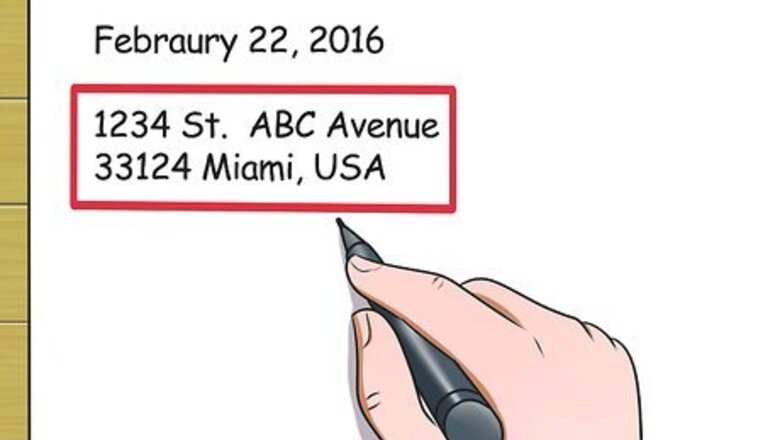
views
Writing a Letter to a Judge
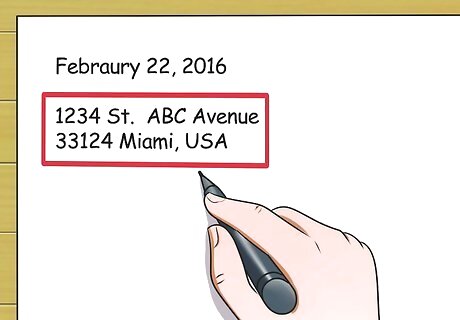
Write the date and the judge's address in the top left. Use left aligned text to write today's date, followed by the judge's full address. If you are not sure how to format this, see the section on addressing the judge on the envelope.
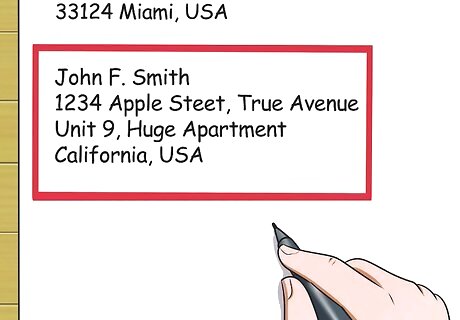
Write your own address beneath this. Add your own, full address, beginning two lines beneath the judge's. Include your name, street address, city, and zip code.
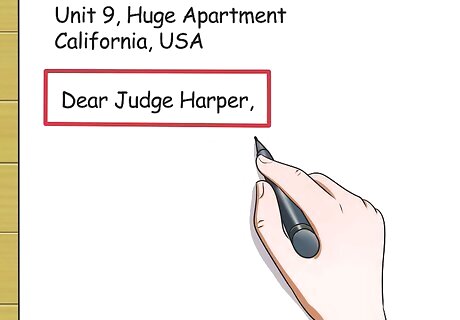
Write "Dear Judge (surname)," to begin the letter. For almost all judges, write "Dear Judge" followed by the judge's last name to begin the letter. Write this on its own line, followed by a comma. Address justices of the UK Supreme Court as "Dear (Lord/Lady) (surname)" instead. If writing to a U.S. state or federal Supreme Court, use “Dear Justice” instead. If a judge's title is "Chief Judge" or "Chief Justice," you may use that title instead. "Judge" or "Justice" is also acceptable.
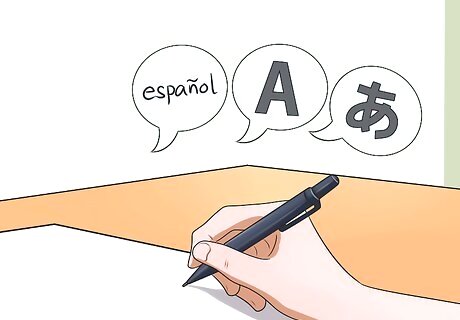
Use the language in which you write best. Many judges have access to professional interpreters, so do not feel you have to write the letter in English. If the language you prefer is rare in your area, however, you may wish to find a native English speaker to help you write a letter. For example, if you are a Spanish speaker living in the United States, it is likely that a judge can find someone to translate your letter. On the other hand, if you speak Romanian in the United States, the judge would probably have a harder time finding an interpreter.

Refer to the name of the case (if relevant). Each criminal case has a specific name and number. If you are writing to a judge about a specific case, refer to it by this name and number in the first sentence of your letter. If you do not know the name of the case, write "I am writing to you concerning the case with defendant (name of defendant)."

Make the purpose of your letter clear. Start out the letter by describing your purpose for writing. This should be in the first paragraph, and preferably in the first sentence. For example, begin the letter "I am writing to you about the defendant Josiah Smith, my brother. I am asking you to lower his bail, so he can afford to hire an attorney."
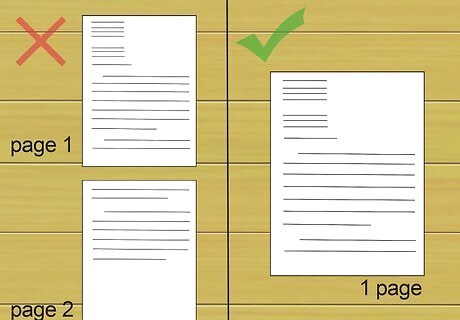
Keep the letter short and simple. Ideally, the letter should be no longer than one page. Write in your own words, except when writing a formal letter on behalf of an organization. Take the time to check spelling and grammar mistakes, or ask someone to help you with this. The judge will take your letter more seriously. You do not need to try to sound like a lawyer or businessman if it makes you uncomfortable. Judges are used to accepting correspondence from all types of people.
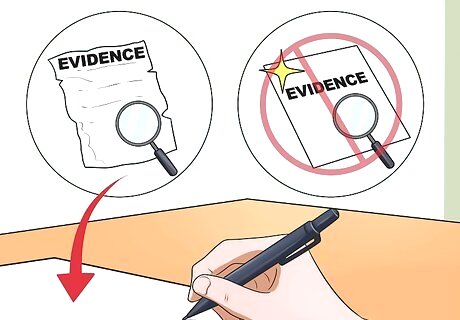
Don't include new evidence for a case. If you believe that you have new evidence for a civil or criminal case, you should hand it over to the parties or attorneys in the case, not to the judge. Due to ethical guidelines, the judge will have to share the evidence with all parties in the case regardless. If someone other than a party or attorney in the case brings evidence before the judge, the judge will most likely turn that evidence over to the police or another agency to decide what to do with it.

Close the letter with “Respectfully." The proper way to close a letter to a judge is "Respectfully," followed by your full name on the line beneath. You may write "Respectfully yours," or "Respectfully submitted," if you prefer.
Addressing a Judge on the Envelope

Start the address on the envelope with "The Honorable (full name)." For example, on the envelope addressed to Judge John Matthew Pool, write "The Honorable John M. Pool." You will need to include a second line with the judge's title, so do not write the court address yet. In the United Kingdom and many Commonwealth nations, judges are often addressed on envelopes as "(His/Her) Hon Judge (surname)" or "(His/Her) Hon (Mr/Mrs) Judge (surname)" instead. If the judge is a United States Supreme Court justice, instead write "Justice (surname)." If addressing the chief justice of that court, currently John Roberts, write "The Chief Justice of the United States" without a name.
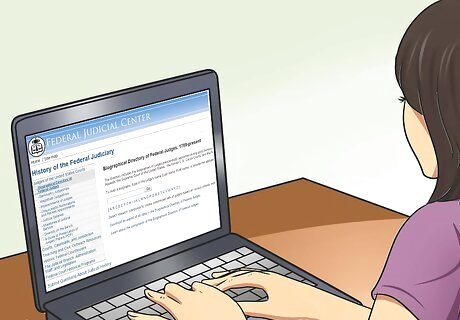
Look up the judge's title and court. If you do not have this information already, search for "judge (name)" online. You can also search for the name of the courthouse online to find its website. Some local telephone books may have a government section with the title and address of local judges or a phone number you can call to learn the address. You can look up the court of employment for U.S. federal (not state) judges by name on the Federal Judicial Center website. If the court address is not available online, call or visit a law school library and ask the librarian for assistance.
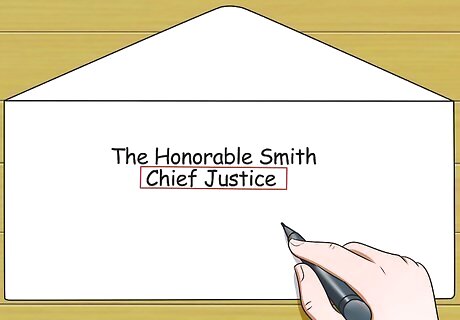
Write the judge's title on the second line. The judge's title is usually displayed on the court website or telephone directory listing, but you do not necessarily need to write the exact title. Use the following guide to determine how to write the title for U.S. judges: Chief Justice: the head of a state supreme court Justice: other members of a state supreme court Chief Judge: the head of any other court Judge: any other judge of any other court, regardless of title Skip this step if writing to the federal Supreme Court. The title is included already in the first line.
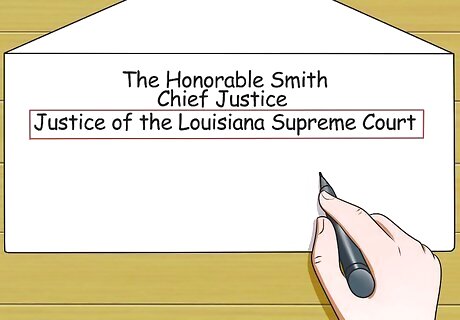
Add the name of the court to the second line. Here are some examples of how to format the names of various U.S. courts, along with the judge's title: Judge of the U.S. Court of Appeals, Fourth Circuit Chief Judge of the U.S. District Court for the Western District of Texas Judge of the Superior Court of Alameda County Justice of the Louisiana Supreme Court
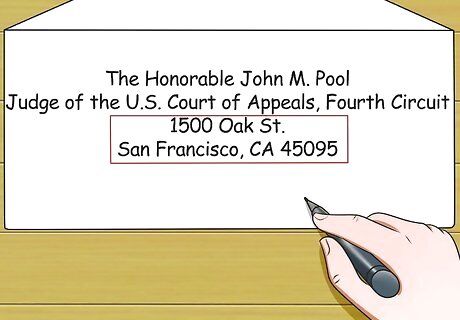
Finish with the postal address of the court. Use the postal address of the court, formatted as usual with the street address on one line, and the city and zip code on a line below it. Here's an example of the final address: The Honorable John M. PoolJudge of the U.S. Court of Appeals, Fourth Circuit1500 Oak St.San Francisco, CA 45095
Making Sure You Can Write a Letter to the Judge
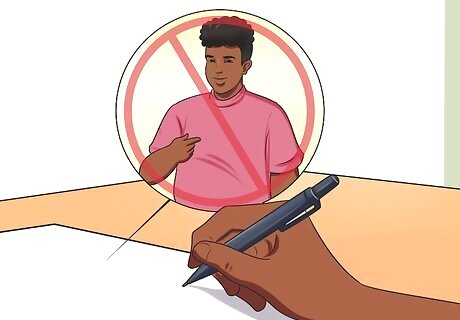
Do not write an ex parte communication. If you are a plaintiff or defendant in a case, you should not send a letter to the judge who is handling your case. That letter would be an ex parte communication, which is prohibited. Judges cannot engage in ex parte communications because they need to decide a case fairly based only on the arguments and evidence presented in court. "Ex parte" means "on one side only; by or for one party.”

File a written motion with the clerk of court. In addition to filing with the clerk of court, you will also have to serve the motion to all of the parties in the case. In your motion you will explain to the court what relief you want. Explain what relief you seek and why you are entitled to that relief. "Relief" means what you are asking the court to do.

Understand that the opposing side will receive the enclosed information. If you send a letter or other document directly to the judge, the judge or court staff must notify all parties (or their attorneys) about your communication, so the other parties can respond to it.
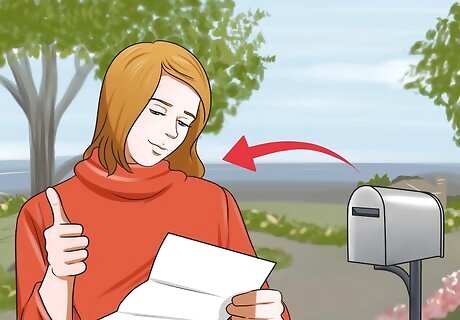
Respect the outcome. The judge has the discretion to deny your request without a hearing.




















Comments
0 comment